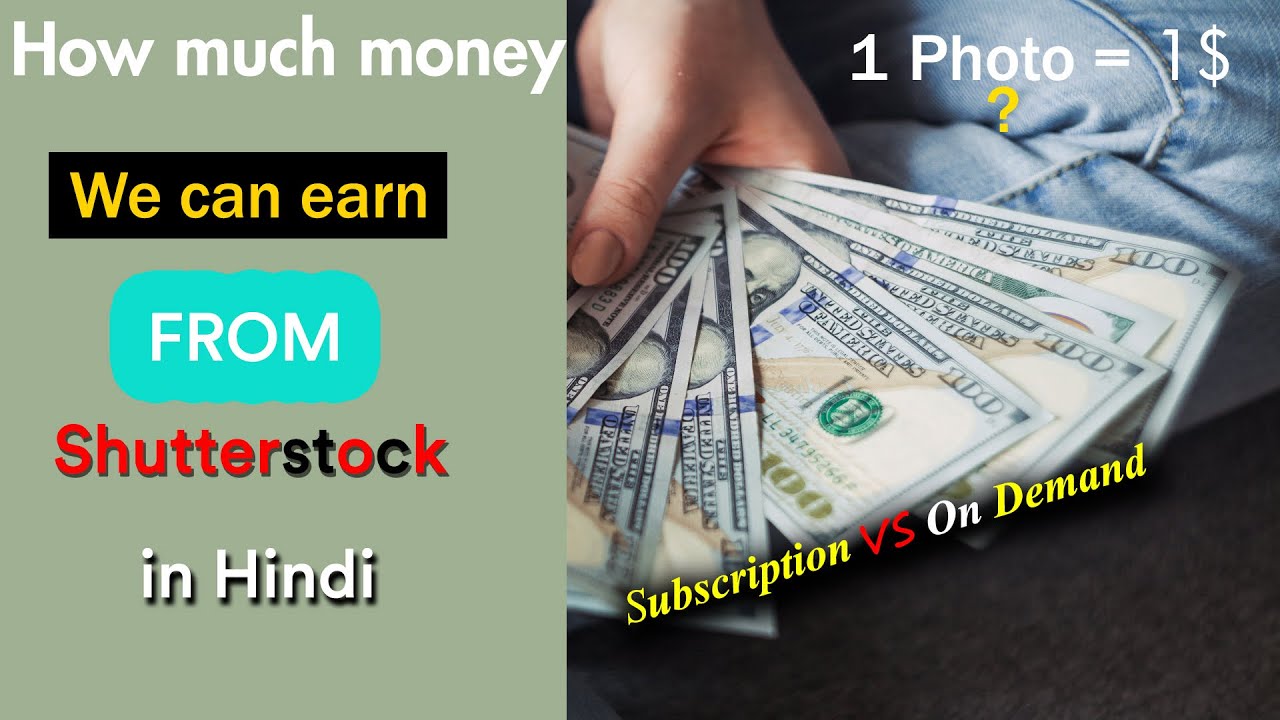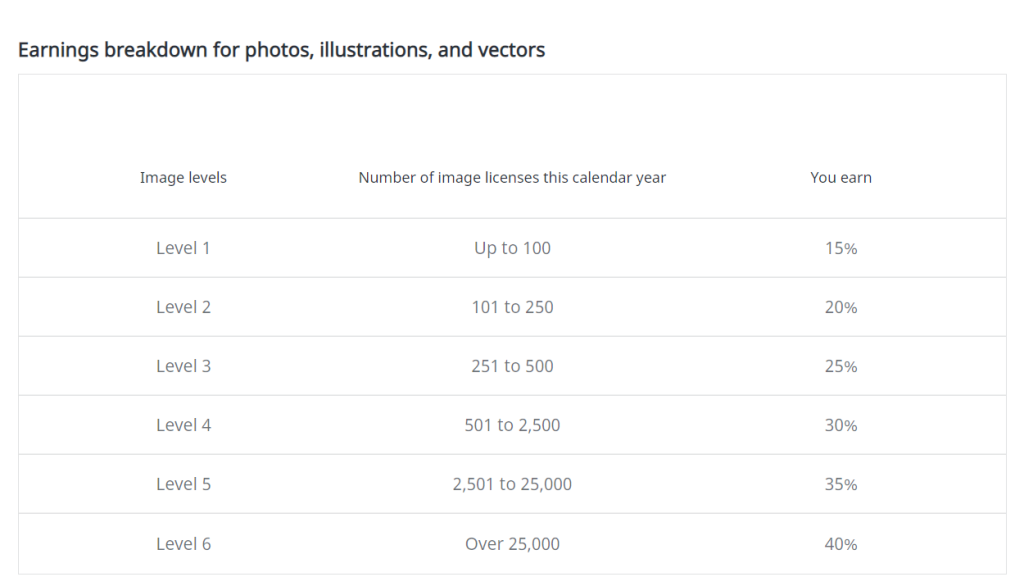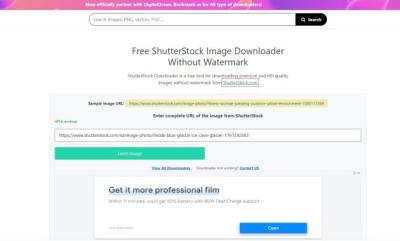If you’re a freelancer working in design, marketing, or content creation, you know how crucial high-quality visuals are to your projects. Shutterstock is one of the leading stock image platforms, offering millions of photos, videos, and illustrations to enhance your work. But understanding the costs involved can be a bit confusing. In this article, we’ll break down what Shutterstock offers and how its subscription plans can fit into your budget, helping you make smart choices without sacrificing quality.
Different Types of Shutterstock Subscription Plans Available

Shutterstock offers a variety of subscription plans tailored to different needs, whether you’re a casual creator or a busy professional. Let’s explore the main options so you can find the best fit:
- Standard Subscription: This is the most common plan, perfect for freelancers who need a steady flow of high-quality images, vectors, and illustrations. Plans typically range from 10 to 750 downloads per month, with prices decreasing as you commit to more downloads. The standard plan usually allows for:
- 5 to 750 images per month
- Royalty-free licensing
- Unlimited downloads in the web app (with limits on downloads)
- On-Demand Packs: If your needs are more sporadic or you prefer paying as you go, on-demand packs might be ideal. You purchase a set number of downloads upfront, usually at a discounted rate. This is flexible and good for one-off projects.
- Extended or Enterprise Plans: For larger teams or agencies, Shutterstock offers customized enterprise solutions. These plans often include bulk licensing, team management features, and dedicated support. Pricing is negotiated based on your specific needs.
It’s worth noting that all plans come with some restrictions based on the license type—standard licenses cover most uses, but if you’re working on commercial products like merchandise or advertising, you might need an enhanced license, which can be an additional cost.
When choosing a plan, consider how many downloads you’ll need each month, the types of media you require, and your budget. Shutterstock‘s flexible options aim to accommodate various freelancing needs, making it easier to access professional visuals without breaking the bank.
Pricing Details for Shutterstock Subscriptions Tailored to Freelancers

When it comes to choosing a Shutterstock subscription as a freelancer, understanding the pricing structure can feel a bit overwhelming at first. The good news is, Shutterstock offers various plans designed to fit different needs and budgets, making it easier to find one that works for you. Let’s break down the main options so you can make an informed decision.
Shutterstock’s subscription plans are typically categorized based on the number of assets you can download per month. These plans are flexible, allowing you to select a package that aligns with your workload and creative projects. Here are some common options:
- Standard Plans: Ideal for freelancers who need a moderate number of assets. These often include options like 10, 20, or 30 downloads per month.
- On-Demand Packs: Best for those with irregular needs. You purchase a set number of downloads upfront, and they don’t expire, giving you flexibility.
- Extended Licenses: For projects that require broader usage rights, Shutterstock offers upgraded licenses, available as add-ons or within certain plans.
Pricing varies depending on the plan you choose. For example, a typical Standard Monthly Subscription might cost around $29 to $49 per month for 10-20 downloads. Larger plans with more downloads naturally cost more but can offer better per-asset rates. Additionally, Shutterstock often provides discounts for annual subscriptions paid upfront, which can significantly reduce your monthly costs.
It’s also worth noting that Shutterstock sometimes offers special promotions or tailored plans for freelancers. These might include bundled assets, custom download limits, or flexible billing options, so keep an eye out for deals that could make your subscription more affordable.
For freelancers, it’s crucial to analyze your typical usage. Are you creating one big project a month, or do you need assets regularly? This will help you choose the most cost-effective plan. Remember, while it might be tempting to go for a larger plan, only select what you genuinely need to avoid overspending.
Factors That Influence Shutterstock Subscription Costs
Several factors can influence how much you’ll end up paying for a Shutterstock subscription. Being aware of these can help you manage your budget and get the best value for your money. Let’s explore the main factors:
1. Number of Downloads
The more assets you plan to download each month, the higher your subscription cost will be. However, larger plans often come with a better per-asset rate. For freelancers, striking a balance between your needs and budget is key — don’t pay for more downloads than you actually use.
2. Type of Assets Needed
Shutterstock offers a variety of assets—photos, vectors, illustrations, videos, and music. Prices can vary depending on the asset type. For instance, videos and extended licenses tend to cost more than standard images. Knowing what you need in advance can help you choose the most cost-efficient options.
3. Licensing Options
Standard licenses are usually included in most plans and are suitable for many projects. But if you require broader usage rights—like for merchandise, large-scale advertising, or print runs—you might need an extended license, which adds to the overall cost.
4. Subscription Duration and Payment Plan
Many freelancers save money by opting for annual plans paid upfront rather than monthly subscriptions. The upfront payment often comes with discounts, reducing your overall expenditure. Conversely, monthly plans offer more flexibility if your needs fluctuate.
5. Promotional Offers and Discounts
Shutterstock frequently offers deals—such as discounts for new subscribers or bulk purchase promotions. Taking advantage of these can significantly cut your costs, especially when starting out or planning a large project.
6. Usage Frequency and Project Scale
If you’re working on multiple projects simultaneously or constantly need new assets, a subscription makes sense. But if your needs are sporadic, on-demand packs or purchasing assets individually might be more economical.
By understanding these factors, freelancers can better plan their budgets and select a Shutterstock subscription that provides the best value. Remember, the goal is to balance your creative needs with your financial constraints to stay productive without overspending.
How to Choose the Right Shutterstock Plan for Your Freelance Needs
Picking the perfect Shutterstock plan can feel a bit overwhelming, especially since there are so many options out there. But don’t worry — it’s all about assessing what you need to make your freelancing life easier and more cost-effective. Here’s how you can approach it:
- Evaluate Your Usage Frequency: Think about how often you’ll need new images, videos, or music. Are you working on multiple projects weekly, or just occasional ones? If you’re creating content regularly, a subscription with unlimited downloads might be the best fit. For occasional use, a smaller plan could save you money.
- Consider Your Content Types: Do you mainly need high-quality photos? Or do you also require videos, vectors, or music tracks? Some plans offer a mix, while others specialize in specific media types. Matching your needs ensures you’re not paying for extras you won’t use.
- Analyze Your Budget: Freelancers often work with tight budgets, so it’s crucial to balance cost and value. Look at the plans’ monthly or annual costs and compare them to your expected downloads. Sometimes, committing to an annual plan gives you a discount, which can be a smart move if your workload is steady.
- Check the Download Limits: Each plan has a limit—say, 10, 30, or unlimited downloads per month. Be honest with yourself about your typical monthly usage. If you often hit the limit, upgrading makes sense; if not, a smaller plan might suffice.
- Review Licensing Options: Make sure the licensing aligns with your projects. Shutterstock offers standard and extended licenses, so double-check that your chosen plan covers your intended use, especially if you’re creating commercial content or products for sale.
- Read the Fine Print: Understand the renewal terms, cancellation policies, and any restrictions on downloads or usage. Being well-informed helps avoid surprises down the line.
Remember, it’s okay to start small and upgrade as your freelancing business grows. Many freelancers find success by initially choosing a plan that fits their current workload and then adjusting when needed. The key is to find a balance between affordability and having enough resources to keep your creative projects flowing smoothly.
Tips to Maximize Value from Your Shutterstock Subscription
Once you’ve chosen the right plan, the next step is making sure every dollar you spend delivers the maximum benefit. Here are some practical tips to help you get the most out of your Shutterstock subscription:
- Create Collections: Organize your favorite images, videos, and music into collections. This way, you can quickly access the assets you need for different projects without wasting time searching.
- Download in Bulk: If your plan allows, download multiple assets at once. This is especially handy when you’re working on a big project and need a variety of visuals or clips. It saves time and ensures you’re prepared for everything.
- Use Search Filters Effectively: Shutterstock offers filters like orientation, color, image type, and more. Mastering these filters helps you find exactly what you need faster, making your workflow more efficient.
- Leverage the Preview Feature: Before downloading, preview assets to ensure they fit your project requirements. This reduces unnecessary downloads and helps you avoid cluttering your workspace with unused files.
- Stay Updated on New Content: Shutterstock regularly adds new assets. Subscribe to newsletters or check the platform frequently to discover fresh content that might be perfect for upcoming projects.
- Combine Assets Creatively: Mix and match images, videos, and music to create unique content. Sometimes, combining different assets can give your projects a distinctive edge without extra costs.
- Respect Licensing Terms: Always adhere to Shutterstock’s licensing rules to avoid legal issues. Proper licensing ensures your work remains protected and professional.
Finally, don’t forget to review your usage periodically. If you find that you’re consistently not using your full download allowance, consider downgrading your plan to save money. Conversely, if your workload increases, upgrading can prevent disruptions. Being proactive about managing your subscription means you’re always getting the best bang for your buck.
Conclusion and Final Thoughts on Shutterstock Pricing for Freelancers
Understanding the intricacies of Shutterstock’s subscription costs is essential for freelancers aiming to optimize their creative projects while managing budgets effectively. The platform offers a variety of plans tailored to different needs, from individual creators to large teams, with pricing that reflects the scope and volume of usage. Choosing the right plan involves assessing your typical usage patterns, considering the type of content you frequently require, and evaluating whether a subscription or pay-per-download option best suits your workflow. For freelancers, it’s important to balance the quality and variety of images, videos, or music with cost efficiency. Keep in mind that higher-tier plans often provide additional benefits such as extended download limits and exclusive content, which can be valuable for ongoing projects.
Additionally, be aware of any licensing restrictions and ensure your usage complies with Shutterstock’s terms to avoid unforeseen costs. Regularly reviewing your subscription plan can help you identify opportunities to downgrade or upgrade, aligning your expenses with your evolving needs. Ultimately, investing in a Shutterstock subscription can significantly enhance your creative toolkit, but it’s crucial to select a plan that offers the best value for your specific freelancing requirements.
By carefully analyzing your usage, understanding the pricing structure, and staying informed about the available options, you can make smarter decisions that support your professional growth without overspending. Remember, the goal is to find a sustainable balance that fuels your creativity while keeping costs manageable.


